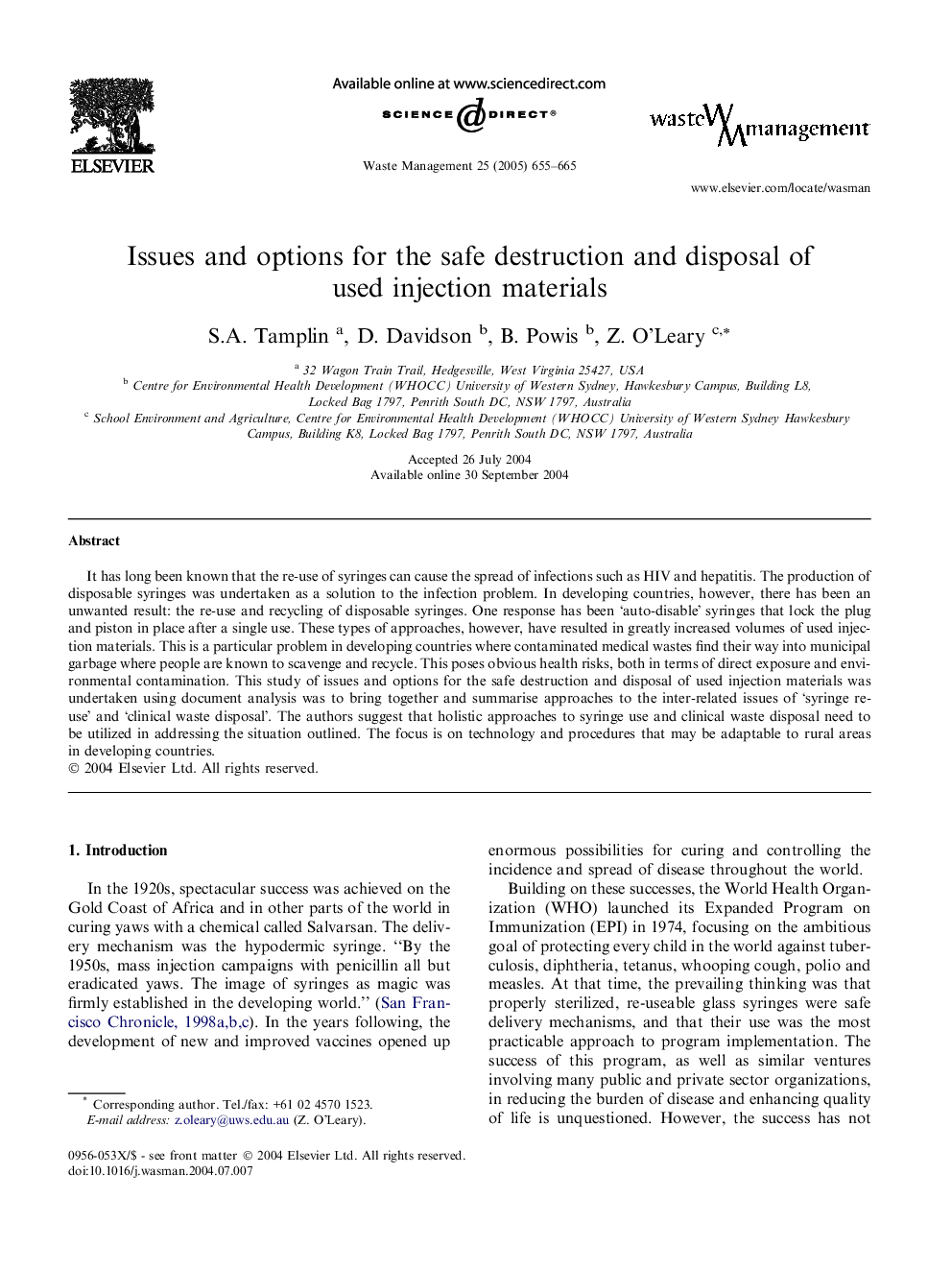| Article ID | Journal | Published Year | Pages | File Type |
|---|---|---|---|---|
| 9465469 | Waste Management | 2005 | 11 Pages |
Abstract
It has long been known that the re-use of syringes can cause the spread of infections such as HIV and hepatitis. The production of disposable syringes was undertaken as a solution to the infection problem. In developing countries, however, there has been an unwanted result: the re-use and recycling of disposable syringes. One response has been 'auto-disable' syringes that lock the plug and piston in place after a single use. These types of approaches, however, have resulted in greatly increased volumes of used injection materials. This is a particular problem in developing countries where contaminated medical wastes find their way into municipal garbage where people are known to scavenge and recycle. This poses obvious health risks, both in terms of direct exposure and environmental contamination. This study of issues and options for the safe destruction and disposal of used injection materials was undertaken using document analysis was to bring together and summarise approaches to the inter-related issues of 'syringe re-use' and 'clinical waste disposal'. The authors suggest that holistic approaches to syringe use and clinical waste disposal need to be utilized in addressing the situation outlined. The focus is on technology and procedures that may be adaptable to rural areas in developing countries.
Related Topics
Physical Sciences and Engineering
Earth and Planetary Sciences
Geotechnical Engineering and Engineering Geology
Authors
S.A. Tamplin, D. Davidson, B. Powis, Z. O'Leary,
